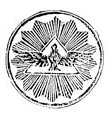|
|
| Автор | Dalton, David
| | Название | The Ukrainian Oligarchy After the Euromaidan. How Ukraine’s Political Economy Regime Survived the Crisis |
| Дата | 2023 |
| Язык | Английский |
| Страниц | 326 |
| ISBN | 978-3-8382-1740-6 |
| Метки | |
|
|
АннотацияHow did the Ukrainian oligarchy survive the institutional disruption of the Euromaidan revolt of 2013/2014? How did it manage to continue its extractive political and economic practices, amid deep changes in Ukraine’s society and polity? To answer these questions, this book analyzes the evolution of the Ukrainian super-rich in 2006-2017, tracing the process of conversion of wealth into political influence through vote-buying in the Verkhovna Rada (the Ukrainian parliament) and of the transformation of political influence back into wealth via elite rent-extraction schemes within the Ukrainian gas sector. A key argument is that continuity in informal practices between the Yanukovych and Poroshenko presidencies, and of the networks that conduct them, meant a prolongation of the dominant political economy regime. The study conceptualizes the processes of the recreation of Ukrainian oligarchy as a “currency flow,” or circuit, of wealth and power. It adds to the literature on the dynamics of informally dominated post-communist political economy regimes a detailed, integrated, and internally comparative case study of Ukraine. "This book is ambitious in its scope ... a thoroughgoing empirical study of one of the defining features of politics in Ukraine.” —Dr Sarah Whitmore, Senior Lecturer in Politics, Oxford Brookes University "A successful attempt to combine usage of theories of oligarchy and national prosperity." —Dr Rasmus Nilsson, Lecturer in Russian Politics, SSEES, University College London |
|
Оглавление книгиСодержание
List of Figures ........................................................................................ 7
List of Tables ......................................................................................... 9
Abstract................................................................................................. 11
Acknowledgements............................................................................ 12
Foreword .............................................................................................. 13
1 Introduction ................................................................................. 15
1.1 Topic, basic definitions and approach ................................ 15
1.2 What is the link between regime resilience and low
standards of living? ............................................................. 16
1.3 What explains Ukraine’s poor record on economic growth,
other than oligarchy? ........................................................... 22
1.4 Thesis, “national” scope and book structure ..................... 27
1.5 Contribution and wider implications ................................. 31
1.6 Methodology, methods and “research journey” ............... 33
2 Wealth defence and prosperity institutions .......................... 39
2.1 Introduction and “rational actors” approach .................... 39
2.2 The theories of wealth defence and institutional
prosperity, and their relevance to Ukraine ...................... 41
2.3 The two theories conjoined .................................................. 58
2.4 Institutional economics, old and new ................................. 59
3 The origins, operations, resilience and evolution of the
Ukrainian oligarchy ................................................................... 63
3.1 Outline and aims .................................................................... 63
3.2 Ukrainian oligarchs and the oligarchic system .................. 64
3.3 Evolution of the Ukrainian oligarchy ................................. 83
4 The wealth of the very rich in modern Ukraine ................... 99
4.1 Preliminaries........................................................................... 99
4.2 Patterns of elite wealth distribution and dynamics in
contemporary Ukraine ...................................................... 118
4.3 Chapter summary and conclusions ................................... 1486
5 Voting on institutional prosperity bills in the Verkhovna
Rada, 2014-17 ............................................................................. 155
5.1 Preliminaries......................................................................... 155
5.2 Voting patterns in the Rada on “prosperity” legislation:
three analyses ..................................................................... 174
5.3 Chapter findings and conclusions ..................................... 215
6 Post-Euromaidan energy rent-extraction schemes, amid
energy-sector reforms............................................................... 221
6.1 Introduction and approach................................................. 221
6.2 Contextualising tools ........................................................... 224
6.3 Rent-extraction schemes in the Ukrainian energy sector,
post-Euromaidan: three case studies .............................. 241
6.4 Chapter findings and conclusions ..................................... 270
7 Conclusion ................................................................................. 275
7.1 What kind of institution is the Ukrainian oligarchy? How
did it survive the Euromaidan? ....................................... 275
7.2 A “currency flow” model ................................................... 278
7.3 The Ukrainian oligarchy as a process ............................... 283
7.4 Economic side-effects of institutional reproduction ....... 286
7.5 Suggestions for further research ........................................ 290
References .......................................................................................... 293
|
|
ЗакладкиДобавить книгу в свои заклaдки |
|

